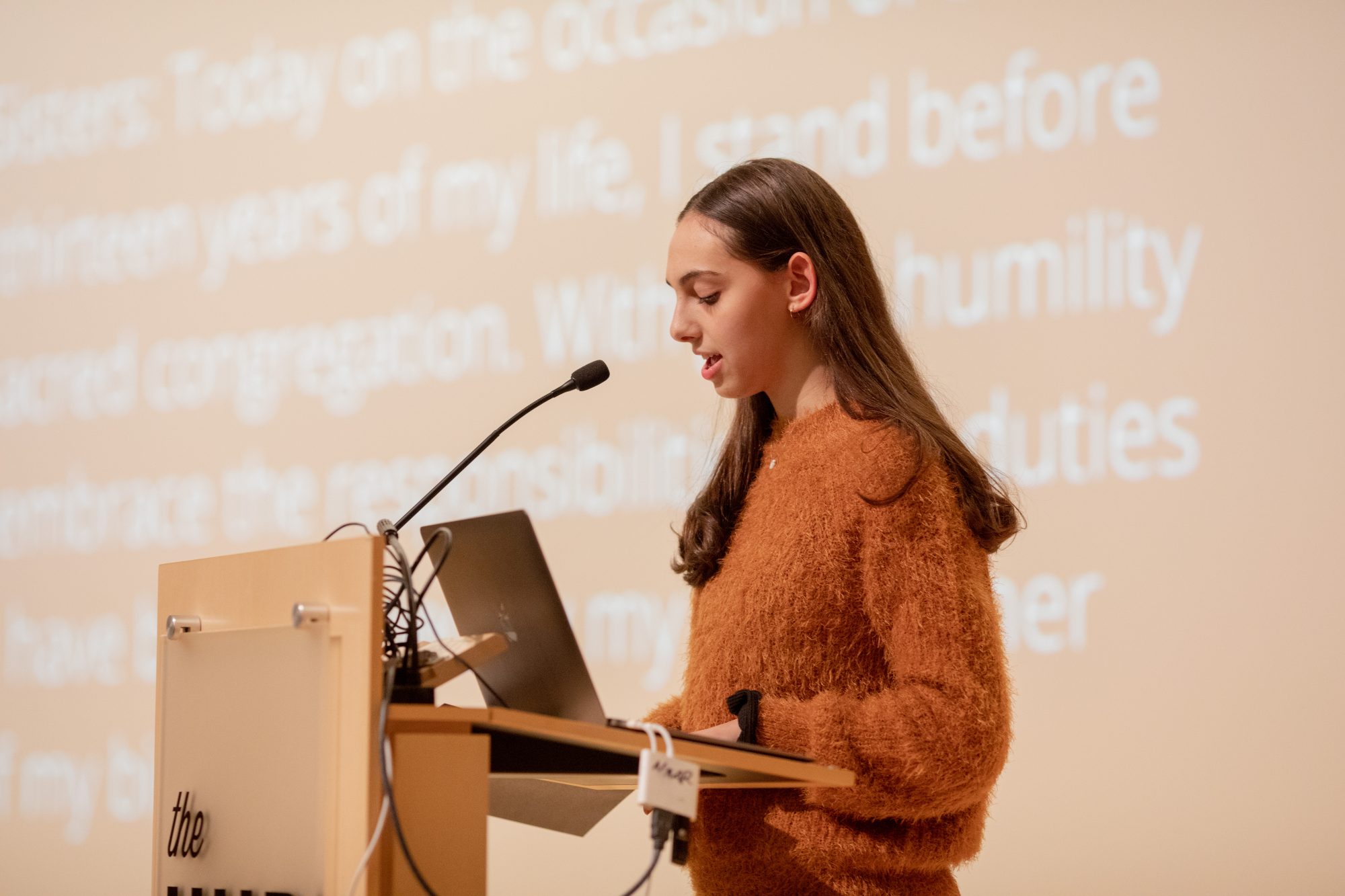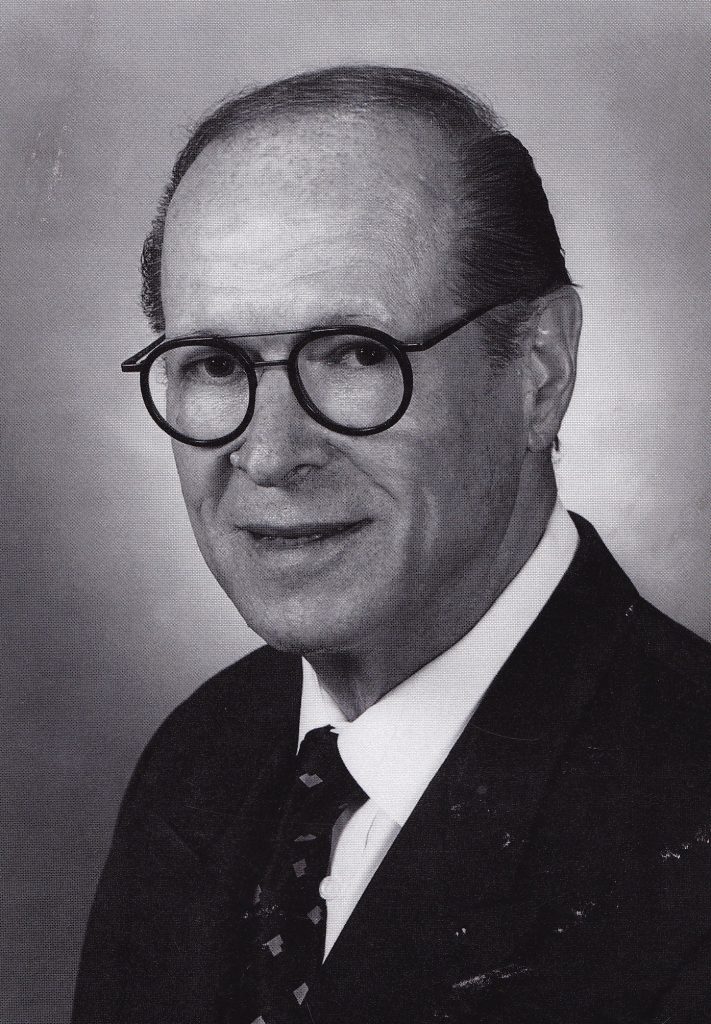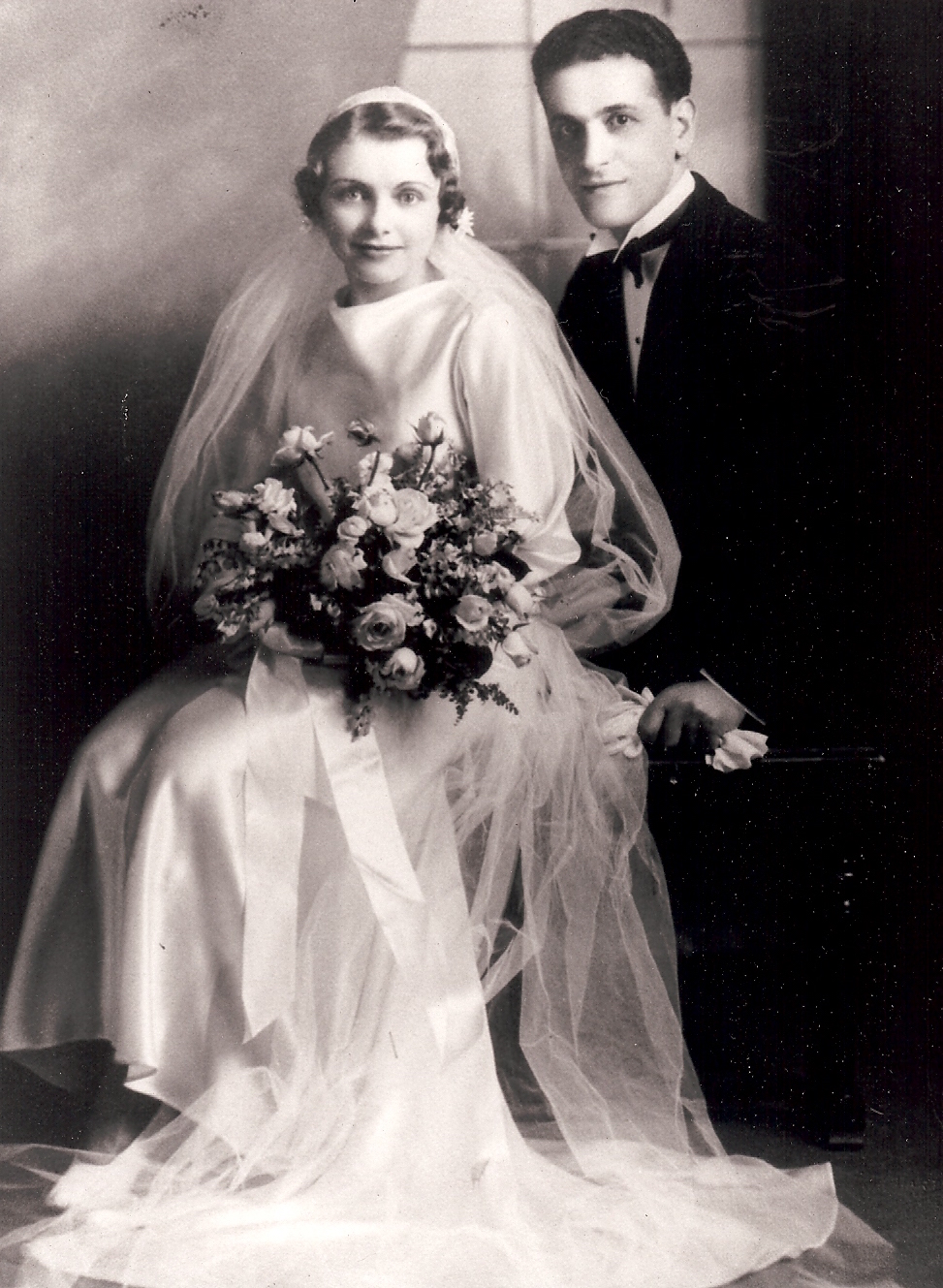
By Anna Jacoby
The first time I heard Ladino was at Ezra Bessaroth, a Sephardic synagogue founded by immigrants from the island of Rhodes like my great-grandfather, Sam Alhadeff. My family still attends Ezra Bessaroth, and Ladino is still incorporated into the prayer services event though it is no longer spoken on an everyday basis. My mother often shared with me her experiences hearing her grandmother, Betty Policar Alhadeff, (wife of Sam Alhadeff), speaking Ladino to her sisters, Sema Calvo and Sue Rousso.

Morrie Capeluto (ST01765). Tribute photo from the Ezra Bessaroth Clarion, January 2000.
This year I had the privilege to participate in the 7th annual International Ladino Day hosted by the University of Washington’s Sephardic Studies Program. As part of the event’s theme of Sephardic life cycle customs, I read the bar mitsva speech of the late Morrie Capeluto (A”H), a long time Seattle resident and member of Ezra Bessaroth. Like many bar mitsva boys at Ezra Bessaroth in the 1940s, Mr. Capeluto presented his bar mitsva speech in Ladino. Back then, most of the Seattle Sephardic community understood Ladino.
I was thrilled to have the opportunity to read Mr. Capeluto’s speech at Ladino Day this year. When I started practicing the speech, even though I did not understand the words at first, the speech nevertheless sounded familiar to me. The rhythms of the language were sounds that I have heard my whole life. I spent many hours working with my patient Ladino coach, Makena Mezistrano of the Sephardic Studies Program.
Through hard work, I was better able to appreciate the beauty of the Ladino language. When I read the speech at Ladino Day, I felt as if I was talking to my great-grandmother and the original Sephardic community who immigrated to the United States almost 100 years ago.

Wedding portrait of Sam and Betty Alhadeff. Courtesy Steve Steinbock.
After reading the speech, I listened to Dr. Devin Naar speak about life cycle customs observed by Jews living in the Ottoman Empire. I tried to imagine what life was like for my great-grandmother Betty Alhadeff as a little girl on the island of Marmara (in present-day Turkey) where she grew up before immigrating to Seattle in the early 1900s. I think my great-grandmother would be disappointed to learn that much of Sephardic life in Turkey has vanished, but would also be also amazed to see such a strong interest in Ladino in 2019 all the way in Seattle.
Participating in Ladino Day has sparked my interest in Ladino. I hope other young people can share my interest in Ladino and help keep this beautiful language alive.
Anna Jacoby is a sophomore at Northwest Yeshiva High School, a member of Congregation Ezra Bessaroth, and an active participant in the Seattle-area Sephardic Adventure Camp.
Featured photo courtesy Meryl Schenker Photography.







Leave A Comment